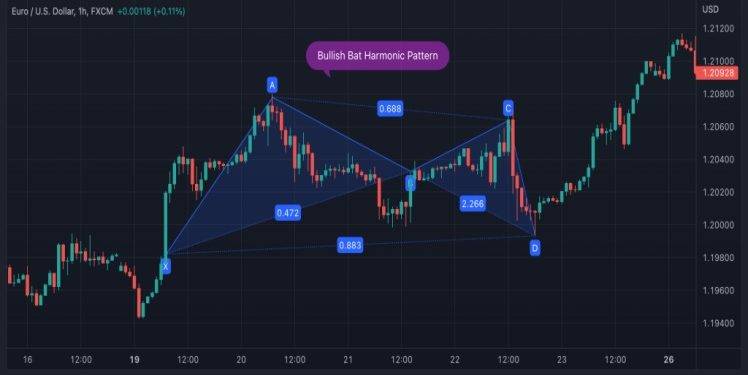The Bat Pattern is a popular pattern among traders in the Forex market. The pattern is created by drawing two trend lines that form a “W” shape on a price chart. The pattern is believed to be a reliable predictor of future price movements, and many traders use it to make decisions about when to enter and exit trades. The Bat Pattern is named after the shape of the trend lines that form the pattern. The pattern is created by drawing a trend line from the high of the first “leg” of the pattern to the low of the second “leg” and then drawing a second trend line from the low of the first leg to the high of the second leg. This creates a “W” shape on the price chart.
What Is Bat Pattern In Forex?
The Bat Pattern is believed to be a reliable predictor of future price movements because it is thought to represent a battle between bulls and bears. The first leg of the pattern is thought to represent the bulls’ attempt to push prices higher, while the second leg is thought to represent the bears’ attempt to push prices lower. The battle between the bulls and the bears is thought to be won by the side that can push prices to the furthest extreme, and this is thought to be reflected in the shape of the pattern.
The Bat Pattern is used by many traders to make decisions about when to enter and exit trades. The pattern is thought to be most reliable when it is formed by prices that have made a significant move already. This is because the pattern is thought to represent a battle between bulls and bears that has already been won by one side or the other. As a result, many traders use the pattern to confirm trends that have already been established. The Bat Pattern can be a useful tool for traders, but it is important to remember that it is just one of many possible patterns that can be used to make trading decisions. It is also important to remember that the pattern is not infallible, and that prices can move in ways that are not predicted by the pattern.
Follow The Bat Pattern
The bat pattern trading is a three-leg reversal chart pattern that is used to trade both long and short reversals in the Forex market. The pattern is created by drawing a Fibonacci Retracement from leg A to B, and then a Fibonacci Extension from leg B to C. The pattern gets its name from the shape of the three legs, which resembles a bat. The bat pattern can be used to trade both long and short reversals. To trade a long reversal, you would enter a buy order at the completion of leg C. To trade a short reversal, you would enter a sell order at the completion of leg C.
The key to trading the bat pattern is to wait for all three legs of the pattern to be complete before entering a trade. Once the pattern is complete, you can place your stop loss at the swing low or the swing high. Your target profit should be at least the same size as your stop loss. The Bat pattern is a popular reversal pattern that can be found in many markets, including Forex. The pattern is so named because it resembles a bat, with the head and body representing the “wings” of the bat. The pattern is composed of two legs, the first of which is known as the “left shoulder” and the second as the “right shoulder”. The left shoulder is typically a smaller leg than the right shoulder, and both legs should be of approximately equal size.
The Bat pattern can be used to trade both long and short positions. To go long, the trader would enter the market at the point of the breakout of the right shoulder. To go short, the trader would enter the market at the point of the breakout of the head. The stop loss for a long trade should be placed below the lows of the right shoulder, and the stop loss for a short trade should be placed above the highs of the head. The target for the trade can be placed at a Fibonacci level, such as the 61.8% or 100% level. The Bat pattern is a reliable reversal pattern that can be used to trade both long and short positions. The key to success with this pattern is to ensure that the left shoulder is smaller than the right shoulder, and to place your stop loss and target orders at key Fibonacci levels.













